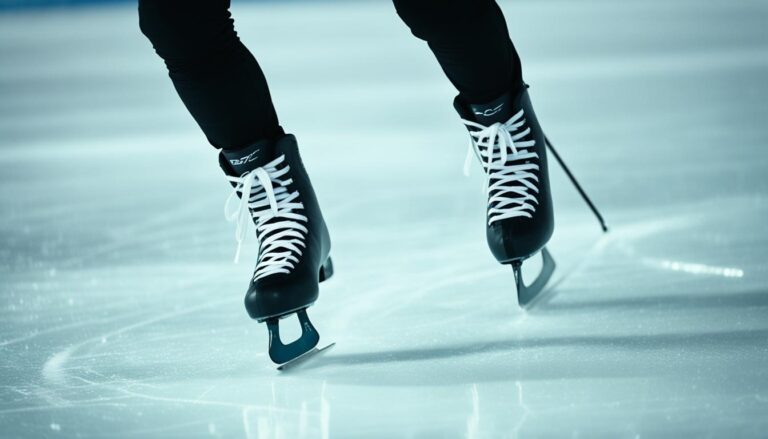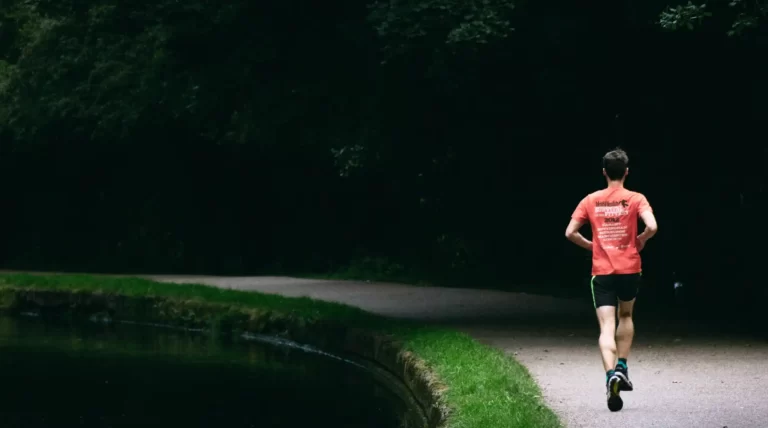Kids With Flat Feet: Causes, Treatment & Prevention
Do you have a child with flat feet and worry about their health and development? You are not the only one. Flat feet, or pes planus, is common in children. It happens when their foot arches don’t form correctly. This makes their whole foot touch the ground. Flat feet can cause pain, discomfort, and even development issues.
This guide will cover what causes flat feet in kids. It will also share how to treat and prevent this issue.
Key Takeaways
- Flat feet is a prevalent condition in children, affecting the development of the arches in the feet.
- The condition can lead to discomfort, pain, and potential developmental problems if left unaddressed.
- Understanding the causes, such as genetic factors, developmental issues, and excess weight, is crucial for effective management.
- Non-surgical treatments like orthotic inserts, physical therapy, and activity modifications are often the first line of defense.
- In severe cases, surgical interventions may be considered to correct underlying structural issues.
The big question is: What is causing your child’s flat feet, and how can you ensure they receive the proper care and support they need?
Understanding Kids With Flat Feet
Kids with flat feet have arches that didn’t form right, so their whole foot touches the ground. This causes pain, discomfort, and can even lead to developmental issues. Parents need to know the types of flat feet and their symptoms to help their kids.
What is Pediatric Flat Feet?
Flat feet in children means their foot’s arches are not there so the entire sole touches the ground. This can happen due to genes, growth problems, or being overweight.
Flexible vs. Rigid Flat Feet
Kids can have flexible or rigid flat feet. Flexible flat feet means the arch looks normal when the child doesn’t stand but then vanishes when they do. Rigid flat feet means the arch doesn’t show at all.
Common Symptoms of Flat Feet in Children
If your child has flat feet, they might feel pain, get tired easily, and find it hard to do sports. This can also affect how they walk or stand, causing other developmental issues. Look out for these signs and get help if needed.
- Pain or discomfort in the feet, ankles, or legs
- Fatigue or tiredness during physical activity
- Difficulty participating in sports or other physical activities
- Changes in gait or posture, such as inward-turning feet or knock-knees
- Delayed motor development or coordination issues
If you think your child has flat feet, knowing these signs is important. Talk to a doctor for the right care.
Causes of Kids With Flat Feet
Flat feet in children might come from a few different sources. Knowing these reasons is key to dealing with the issue. It helps us find the best ways to manage it.
Genetic Factors
Genes play a big role in flat feet. Studies show it can run in families. Children of parents or relatives with flat feet are at a higher risk.
Developmental Issues
Muscle or bone problems can cause flat feet too. These issues may stop the arch of the foot from forming. This makes the whole foot touch the ground.
Obesity and Excess Weight
Being overweight can also lead to flat feet. Extra body weight can stress the feet. It prevents the arch from developing properly. So, keeping a healthy weight is important for foot health.
Diagnosing Flat Feet in Children
Healthcare pros use a detailed method when checking for flat feet in kids. It all starts with a close look during a physical. They watch how the foot moves and check the arches’ flexibility for any signs of pain.
Then, doctors and foot specialists might do more tests. They watch how a child walks and check muscle strength. This helps them understand what might cause the flat feet and how serious it is.
Physical Examination
The healthcare provider looks at how the child walks. They look for any unusual movements. They also check the foot’s ability to move and the strength of its muscles.
This part of the checkup gives the doctor a lot of important clues about why the child has flat feet.
Imaging Tests
Sometimes, the doctor orders X-rays or MRIs. This provides more details about the child’s flat feet. These tests can show any bone issues or other problems that cause the flat feet.
Having these images helps doctors create a plan to help the child’s feet.
Non-Surgical Treatments for Kids With Flat Feet
Non-surgical treatments are often tried first with children who have flat feet. These methods focus on supporting the feet, building up muscles, and changing activities. The goal is to reduce any pain and help the feet grow strong and healthy.
Orthotic Inserts and Supportive Shoes
Using orthotic inserts and supportive shoes is a key non-surgical step. Orthotics, like custom arch supports or insoles you can buy at a store, add stability and support. It’s also important to pick shoes that have cushioning and good support. This helps improve how a child’s feet feel and work.
Physical Therapy and Exercises
Physical therapy and specific exercises can really help kids with flat feet. These activities focus on making the foot, ankle, and leg muscles stronger and more flexible. Certain exercises for balance, feeling where your body is, and stretching can be especially good.
Activity Modification
Sometimes, changing what activities a child does is necessary. This might mean they need to stop or limit high-impact sports. Instead, they might do low-impact exercises. It also could mean making sure they have extra support when they’re active. This approach can keep their feet from being stressed too much and stop problems from getting worse.
Surgical Interventions for Severe Cases
In some kids with flat feet, non-surgical methods aren’t enough. The foot problem is big and affects their daily life. In these cases, surgical intervention might help. It’s done by experts to fix the flatfoot and make the feet work better.
The doctor chooses the right surgery based on how bad the flatfoot is. For instance, they might:
• Lengthen or move tendons to fix bone alignment.
• Cut and realign foot bones to improve shape and function.
• Fuse foot joints for better stability, mainly in severe cases.
Deciding to use surgery for children’s flat feet is carefully thought out. It looks at how serious the issue is and the child’s age and health. The aim is to help the child move better and grow without foot troubles.
Kids With Flat Feet
Kids with flat feet should be careful with what they do. They need the right shoes and sometimes have to pick activities that are less hard on their feet. Shoes with support are key to help their feet not get strained.
Accommodating Flat Feet in Children’s Activities
Kids with flat feet might need to skip some sports to protect their feet. They should choose activities that don’t put a lot of pressure on their feet. Adding extra support helps them play and move without pain.
Choosing the Right Footwear
Choosing the right shoes is critical for kids with flat feet. The best shoes have good arch support and cushioning. They reduce the pressure on their feet. Having the right size is crucial too. Wrong size shoes could make the problem worse.
| Flatfoot Accommodations | Flatfoot Footwear |
|---|---|
| Modifying high-impact sports | Shoes with arch support |
| Providing additional support during activities | Shoes with cushioning |
| Encouraging low-impact exercises | Shoes with stability features |
Flatfoot Prevention Strategies
While flat feet can’t always be avoided, there are steps parents can take. They can encourage proper foot development and cut down the flat feet risk in kids. By using these strategies, we can boost our kids’ foot health and decrease the effects of this condition.
Encouraging Proper Foot Development
Encouraging proper foot development is crucial in preventing flat feet in children. Letting kids walk barefoot at home is great. It strengthens their muscles and helps their arches form naturally.
Picking the right shoes is important too. Shoes should have good arch support and cushioning. This helps in healthy foot growth.
Maintaining a Healthy Weight
Extra weight or obesity can cause flat feet. It puts more pressure on the feet and stops the arch from developing right. Keeping a healthy weight with a good diet and exercise can lower the flat feet risk in kids.
Strengthening Exercises for Flat Feet
Doing specific exercises can prevent and help flat feet in children. Exercises like calf raises, toe curls, and balance activities enhance muscle tone and flexibility. This is especially useful for children prone to or with flat feet.
By taking these steps, we can improve our children’s foot health. This lessens the effect of flat feet, letting them live active and comfy lives.
When to Seek Medical Attention
If your child has ongoing pain, feels uncomfortable, or their feet are not growing right, see a doctor right away. Taking action early can fix the root problems and stop things from getting worse.
Signs of Concern
Watch for these signs as they may mean a trip to the doctor is needed: severe pain, trouble walking or playing sports, and changes in how your child stands or their foot shape. These could point to a bigger issue that needs special care.
Finding a Pediatric Podiatrist
Start by talking to your family doctor to find the right specialist for your child’s flat feet. They might recommend a pediatric podiatrist in your area. You can also look up local podiatrists who are skilled in helping children with foot issues.
Getting help from a pediatric podiatrist is key for your child’s care. They’ll provide the right medical attention to help your child’s feet grow well. Don’t wait to get expert advice if you’re worried about your child’s feet.
Coping With Kids With Flat Feet
Flat feet can be tough for kids and their families. It affects the way kids feel and what they can do. Offering support is key. It helps children feel good about themselves, even with flat feet.
Emotional Support and Understanding
Kids with flat feet deal with both physical and social issues. These can affect how they feel. It’s really important to listen and be there for them. Encouraging them to talk and find ways to deal with stress is crucial.
Accommodating Special Needs
Some physical activities or daily tasks can be hard. But, with the help of healthcare and education experts, we can make things easier. This might mean changing the equipment or how hard an activity is. The aim is to let these kids take part safely.
Support and understanding make a big difference. With the right help, kids with flat feet can lead happy lives. Creating a welcoming space and working with specialists is key. It lets these children achieve their best in all areas.
Frequently Asked Questions About Flat Feet in Children
Parents often find dealing with kids who have flat feet tough. We’ve put together a FAQ list on pediatric flat feet. It talks about causes, symptoms, treatment options, and how to prevent it.
What causes flat feet in children? Flat feet in kids can come from family traits, growth problems, or being overweight. It’s often a mix of these things. Sometimes, flat feet just run in the family. But, problems with muscles or bones can also cause it. Overweight children might get flat feet because their feet endure more pressure, affecting their arches.
How do I know if my child has flat feet? Watch for signs like foot pain, fatigue, balance issues, or if their entire sole touches the ground. If you suspect flat feet, see a foot doctor or your child’s healthcare provider. They can offer a clear diagnosis.
What are the treatment options for kids with flat feet? Most times, methods without surgery are tried first, like orthotics or special shoes. Physical therapy can help too. If these don’t work, there’s also surgery to fix any structural problems.
How can I help prevent flat feet in my child? Although not all flat feet can be avoided, you can foster healthy foot development. Let kids go barefoot indoors. Keep them at a healthy weight. Include foot and ankle exercises in their daily activities. Being proactive can make a difference in their foot health.
Conclusion
Flat feet is common in kids. It might happen due to genes, how a child grows, or being overweight. Luckily, there are both non-surgical and surgical ways to help. These can make the condition easier to manage and keep the feet healthy.
Parents can help their kids with flat feet stay healthy and active. By learning the causes, spotting symptoms, and looking at treatment options, they can work with doctors. Doing this helps kids with flat feet do more without pain.
With the right care, children with flat feet can do anything they set their mind to. This includes playing, exploring, and enjoying sports. Taking care of their feet is key. It helps them grow as strong as other kids and live their best life.









